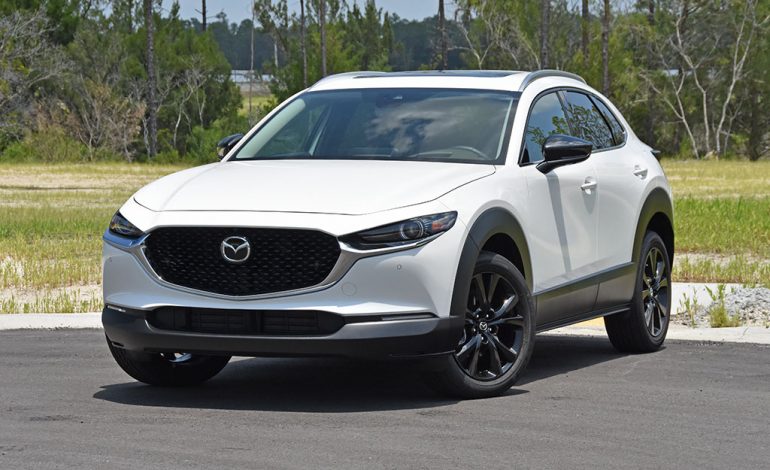
When it comes to combining driving enjoyment in affordable vehicles, Mazda seems to have things figured out. Not to mention, their lineup of crossovers seems to be the most enthusiast-oriented lineup at reasonable prices, with a premium interior to boot. In my latest brush with a Mazda vehicle, I get the CX-30 with the turbocharged engine, which has now become my favorite mainstream compact crossover.
The latest Mazda CX-30, which was a new model redesigned in 2020 from the outgoing CX-3, nearly mimics the looks of the rest of the new lineup, which is a good thing because Mazda has some good-looking vehicles. For its compact size, the CX-30 does well to display its smallish proportions that look the fitting sporty part to match its welcomed performance, especially when you opt for one of the two Turbo trims to get the more powerful engine.
Also, don’t forget that you can get discounted new car pricing with a free quote through qualified local dealer partners.
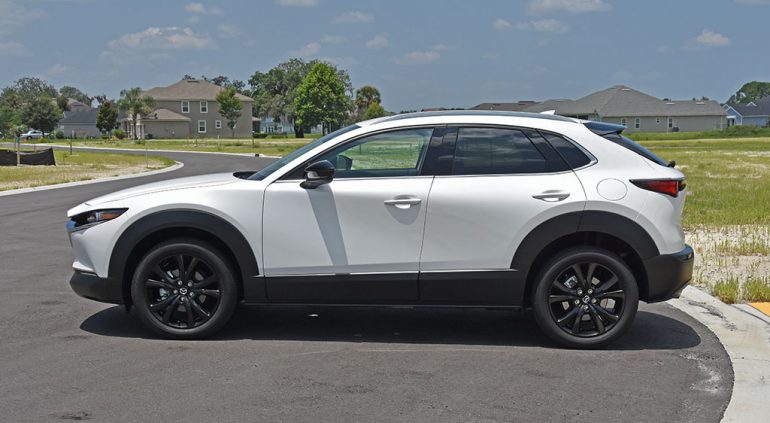
Apart from having an initial sporty character, the Mazda CX-30 finds itself with a slight edge over the competition for both its powertrain offerings, starting with the base 2.5-liter 4-cylinder engine with its 191 horsepower and 186 lb-ft of torque. For the 2023 model year, power from the base engine is improved upon from the previous years, as is fuel consumption. Found in my CX-30 2.5 Turbo Premium Plus test vehicle is the more powerful turbocharged 2.5-liter 4-cylinder engine with 227 horsepower and 310 lb-ft of torque when using regular unleaded fuel. Fill up the 12.7-gallon tank with premium fuel, and you’ll increase power to 250 horsepower and 320 lb-ft of torque.
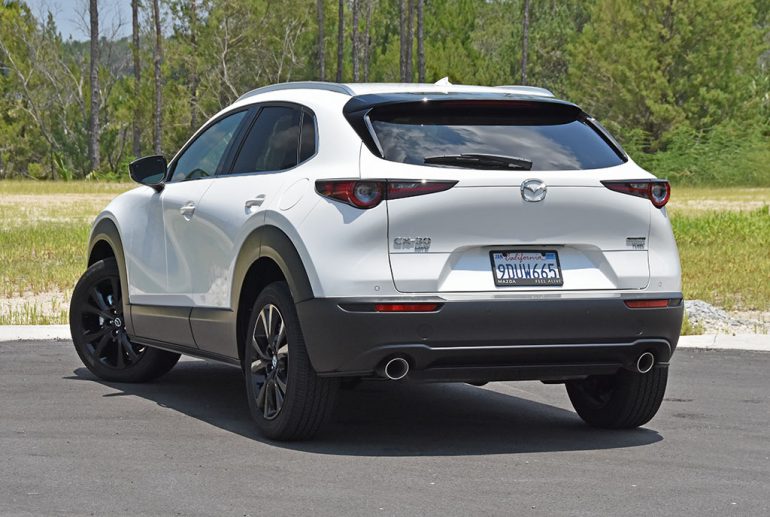
Both engines are mated to a proven 6-speed automatic transmission and have standard all-wheel-drive (AWD), which I found to be quite capable despite it having only 6 gears to work with in a world where 8 and 10-speed autos are common. Power delivery in the turbocharged engine seems to be all about the torque where it seems to utilize the lower RPM range more so than allowing the engine to spin up to its 6,300 rpm redline. The programming of the 6-speed automatic in keeping the engine at its lower torque-filled rev range seems to be an interesting experience, where the CX-30 almost feels like a diesel-powered vehicle at times. I don’t mind it, but some may take a while to become accustomed to such a feeling. Additionally, the CX-30 always feels surefooted, partly thanks to its AWD system, even with a front-wheel power bias.
What I do really like, apart from having a substantial amount of low-end grunt and pulling power, is the slight feedback you get from the steering rack. Not only does the CX-30 2.5 Turbo win me over for its driving dynamics, but the steering feel is more natural – at least the most natural out of any crossover I’ve driven in the past few years. The steering effort is spot on as well, left in the normal drive mode. Switch to the Sport drive mode, and you may notice a bit more effort is required as the transmission will hang onto lower gears longer, and the throttle mapping is aggressively advanced.
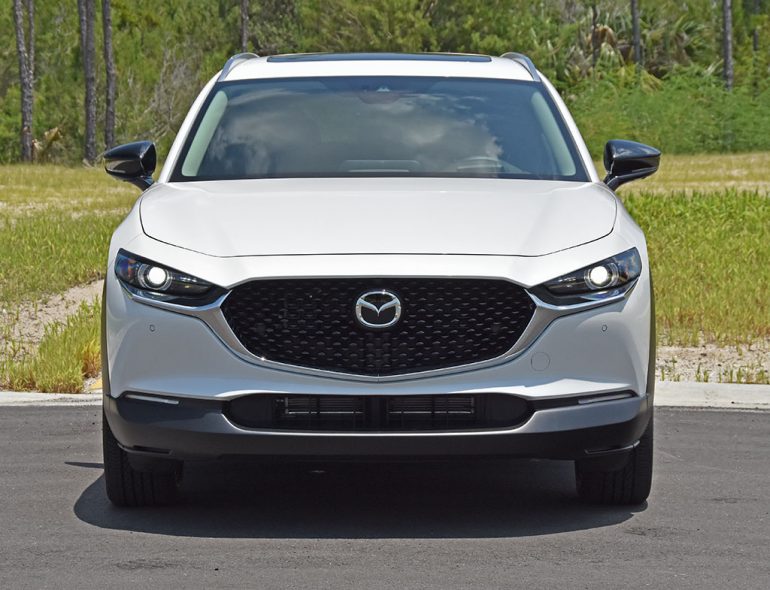
The Mazda CX-30 2.5 Turbo Premium Plus is an excellent vehicle out on the road where it doesn’t feel overly stiff for the suspension setup but appeals to handle twisty back roads surprisingly well. Overall, the CX-30 Turbo feels more like a 4-door hatchback than a crossover. Fundamentally, it feels mostly like the Mazda3 hatchback turbo that I reviewed last year, another excellent-driving vehicle for its class. Zero to 60 mph takes place in just 6.4 seconds, while the base engine does it in about 9.3 seconds.
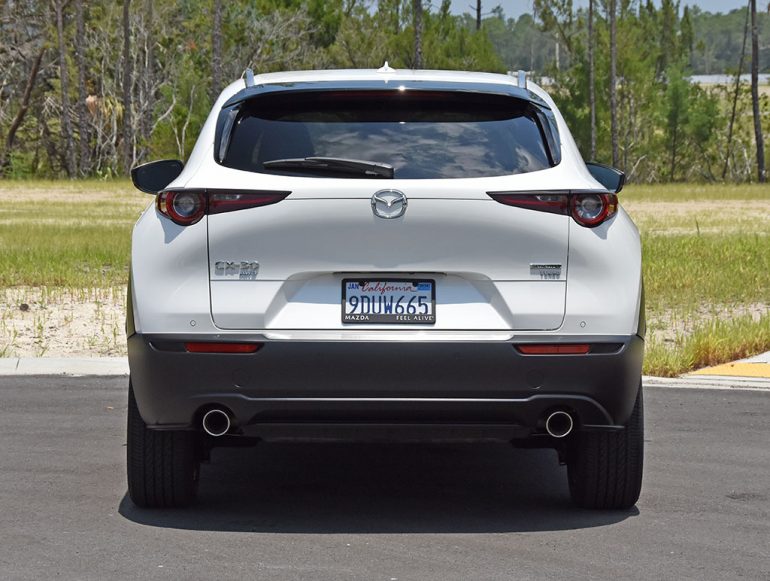
The overall fuel consumption was a bit underwhelming during my time with the CX-30 Turbo. I averaged about 22 mpg around town and was able to get as much as 28.5 mpg on the interstate driving a steady 76 mph. The EPA estimates of 22 mpg city, 30 mpg highway, and 25 mpg combined seem attainable in the real world. However, you must be mindful of the range with the smallish 12.7-gallon fuel tank, which gets you as much as 381 miles on a full tank provided you match the 30 mpg all the way, which isn’t necessarily realistic.
Mazda has kept with its tradition of being a bit more premium than other mainstream brands when it comes to the interior. Such a characteristic carries over well for the new Mazda CX-30, especially in the higher trim levels. There’s a respectable amount of soft-touch surfaces throughout, along with a generous use of accented stitching. The simulated leather upholstery and comfy heated front seats in my CX-30 2.5 Turbo Premium Plus test vehicle proved to fit the premium tone and had a surprising amount of adjustability to fit my 6-foot-3-inch frame. I even found myself moving the driver’s seat far forward from the end of its rearward travel.
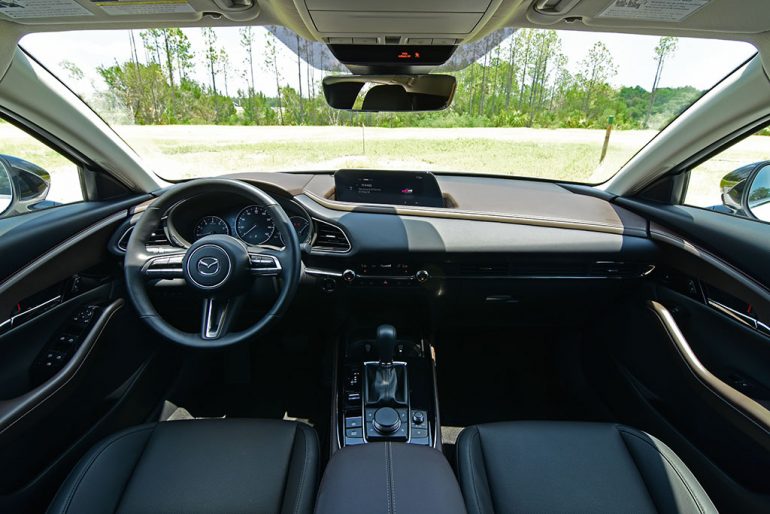
Mazda did well for clever use of the interior space of the CX-30, being a compact crossover. The rear seats, with their 60/40-split folding seatbacks, have just enough space for two adults and one child in the center of the bench.
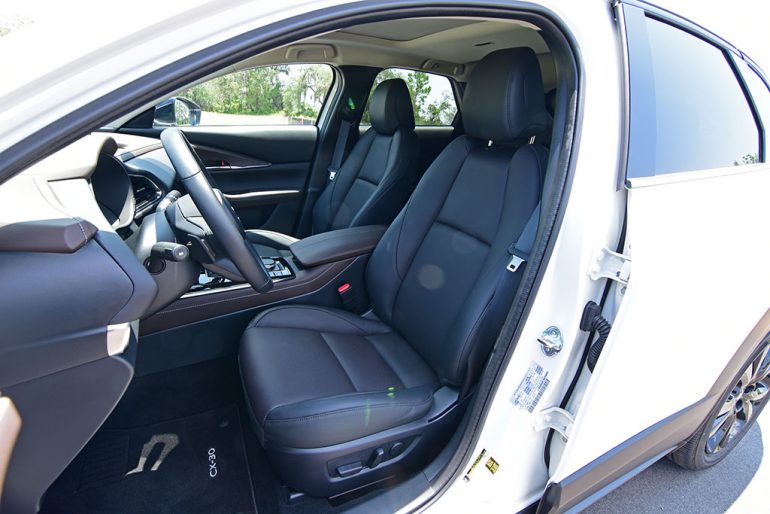
The cargo room is also surprising for a compact crossover but a bit smaller than some competitors. The key element here is it is usable for the type of vehicle that the CX-30 is, in addition to having a power liftgate to access the rear cargo area.
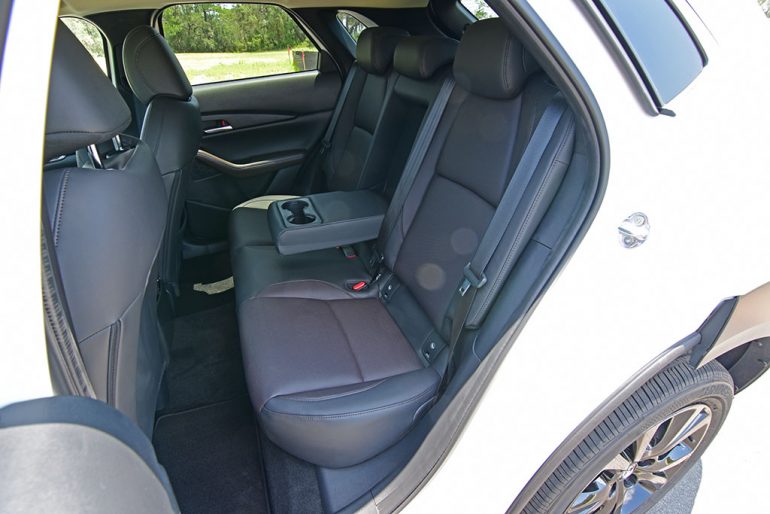
Mazda’s latest infotainment unit is mostly a carryover with the 8.8-inch screen that is now fully operated with the physical control knob and button located just behind the gear shifter. There is no longer any touchscreen capability for use of Apple CarPlay when you are parked. A touchscreen feature would have been nice to have as I find that some people don’t want to be forced to use the central control knob. Integration of Apple CarPlay and Android Auto via USB connection works well, apart from not being able to touch the screen for control.
The premium feel translates through the interior controls and displays, including the automatic dual-zone climate control, color head-up display, and a gauge cluster that is partly digital. Mazda keeps things very simplistic throughout, which is a good thing.
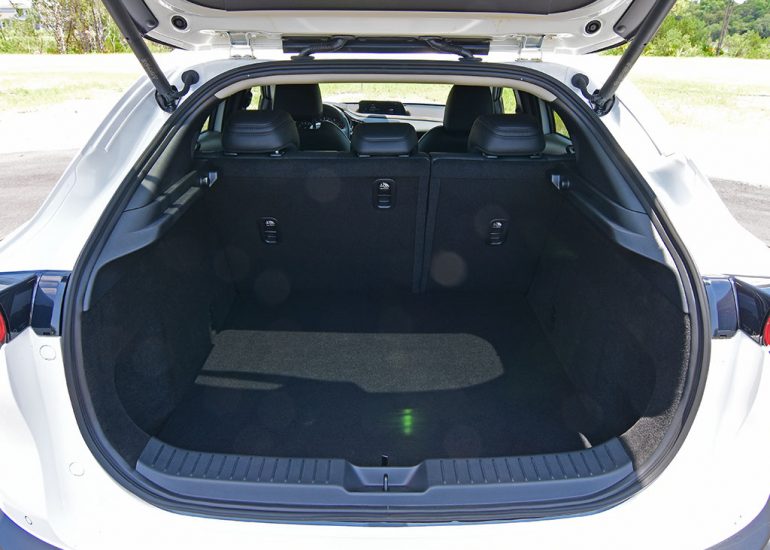
The active safety features are plentiful with the typical inclusion of a lane departure warning system, lane keep assist, blind-spot monitoring with rear-cross traffic alert, smart brake support with forward collision warning/emergency braking/pedestrian detection/bicyclist detection, radar cruise control, and a 360-degree camera system that can be displayed at any time when driving.
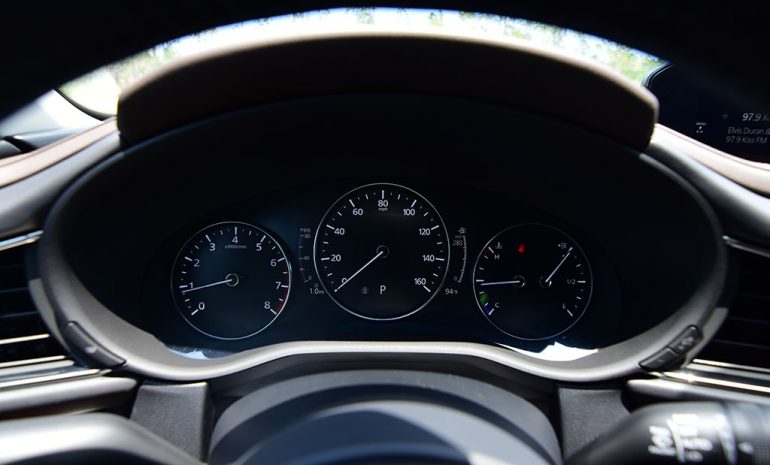
Mazda keeps things quite competitive in the pricing arena, and the value is added in its proven and powerful powertrain setups, premium interior appointments, and sporty-confident-inspiring driving character. The new CX-30 starts at just $22,950 for the base trim and less-powerful engine but offers just the right amount of equipment, including the full array of active safety features minus the blind-spot monitoring with rear-cross traffic alert. Each trim level has a set features list with only a couple of stand-alone options available. With that, my nicely equipped CX-30 2.5 Turbo Premium Plus test vehicle comes to a price of $37,170.